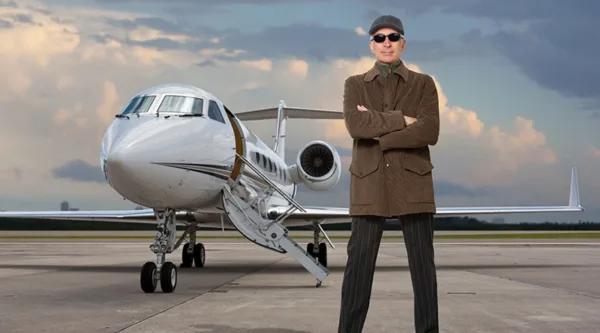 When people consider buying an aircraft, they may liken it to buying a car. However, it’s completely different!
When people consider buying an aircraft, they may liken it to buying a car. However, it’s completely different!
They may both be major purchases, but buying an aircraft is vastly different and requires a much more significant investment. While cars are a thousand-dollar purchase, an aircraft can be a multi-million-dollar purchase. Not only is it a much more complex transaction, but it is important to understand all the financial and operational responsibilities of aircraft ownership. Here’s an outline of the typical steps involved if you are buying an aircraft and the related responsibilities for operating the plane.
1. Determine Your Needs
Consider your reason for wanting to buy an aircraft (e.g., personal use, business, cargo) and the type of aircraft that would suit your needs (e.g., single-engine, multi-engine, jet, turboprop). How much do you have to invest? Setting a budget for the aircraft will help you determine what types of aircraft are feasible for you. Aside from selecting a budget, the range and size of aircraft is pertinent to fit your specific mission’s needs.
2. Research and Select Options
After determining the type of aircraft you are looking for, begin researching models on the market. Some websites that can help you locate used aircraft such as controller.com, aso.com and avbuyer.com. However, comparing the features and benefits of each model can be quite confusing. An aircraft consultant or broker can be helpful to navigate the market and make an informed decision when buying an aircraft.
3. Finance and Budget the Ownership and Operation of Your Desired Aircraft
Some financing options for aircraft include loans, leases, or fractional ownership. Some aircraft owners with good credit scores and substantial down payments use traditional bank loans. However, there are specialized aviation lenders such as Global Jet Capital and JetLoan Capital that can offer more tailored financing options. The seller of the aircraft may offer their own financing, too. Loan terms may be fixed or variable, depending on the lender, but a typical 10-20% downpayment on the aircraft is standard when buying an aircraft.
Remember that ownership is just the beginning. When buying an aircraft, you must also consider the costs associated with storing, maintaining and operating it. There are several fixed and variable expenses to consider before the purchase is made.
- Hangar fees
- Fuel charges
- Maintenance costs
- Insurance fees
- Crew salaries and training
4. Letter of Intent (LOI)
This kickstarts the buying process and offers an initial purchase price agreed upon by the buyer and seller. An LOI is only the first step in the process to be followed by a purchase agreement later.
5. Confirm Legal and Regulatory Compliance
Conduct a title search to ensure no liens or legal issues are associated with the aircraft and that the aircraft complies with all relevant aviation regulations and standards (e.g., FAA regulations in the United States). As the owner, it will be your continued responsibility to keep up with any changes or additions to FAA regulations to ensure your aircraft remains in compliance. This can be a highly involved and ongoing task. Hiring an experienced management company will ensure all is up to date and your asset is being well maintained.
6. Have a Pre-Purchase Inspection
Following an agreed upon, signed and fully executed LOI by all parties involved, the aircraft should be inspected by a qualified professional who will conduct a thorough pre-purchase inspection. The inspector will help you examine the aircraft’s logbooks and maintenance records to ensure it has been well-maintained and complies with regulations. A pre-purchase Inspection offers assurances that what you are buying is as advertised.
7. Negotiate the Price
The last step in buying an aircraft is finalizing a purchase agreement. Assuming the pre-purchase inspection is uneventful, the agreed upon LOI purchase price is set. If the pre-purchase inspection highlights discrepancies, renegotiate the purchase price with the broker/seller. Next, arrange for payment and transfer of funds and complete the necessary paperwork to transfer ownership of the aircraft. Finally, register your aircraft with the appropriate aviation authority (e.g., FAA in the United States) and proceed to obtain necessary insurance coverage and set up a maintenance and operation schedule. Congratulations! You’re an aircraft owner!
Buying an aircraft is the beginning of an exciting adventure that also involves much responsibility. As an aircraft owner, you oversee all aspects of the safety and operation of your aircraft. You are responsible for keeping it well maintained, operational, and in regulatory compliance, as well as flown by pilots and crew who are properly credentialed by the FAA.
Yet we encourage you not to let this massive responsibility deter you from buying an aircraft! One of the easiest ways to keep your aircraft airworthy at all times is through an aircraft management program. As your management company, we take the responsibility off your shoulders. Also, as a Part 135 operator, we may help aircraft owners reduce their overhead 30-50% if their jet can be added to our Air Charter Certificate and chartered when not in use. Our service eases the burden of aircraft ownership and operating costs, too!
We are aviation specialists with decades of experience in the industry helping customers who are buying an aircraft. If we can help you with an aircraft purchase, please get in touch with our aviation consultant, Greg, at 800-247-2834 for more information.
